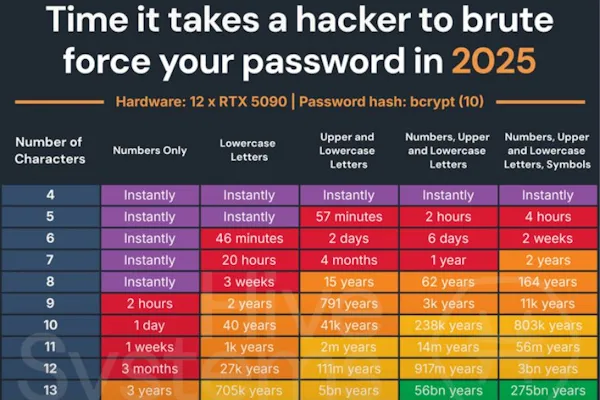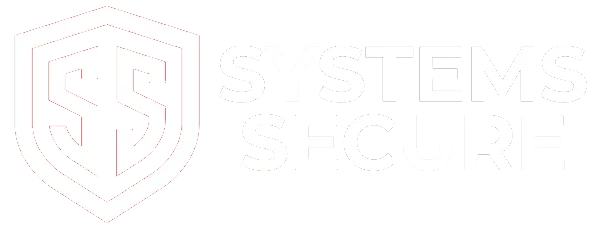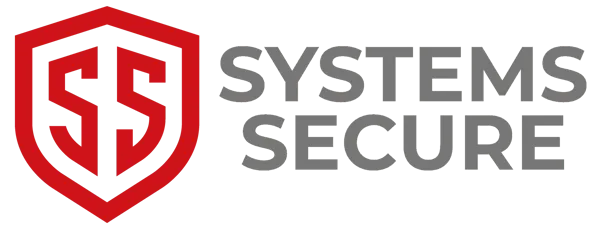Blog
Welcome to the Systems Secure Blog — your go-to resource for practical, no-fluff cybersecurity advice tailored for business owners and managers. Whether you're running a growing team or working with outsourced IT, we break down complex cyber risks into plain language and give you real-world solutions to protect your business, data, and reputation. From compliance guides and threat insights to expert tips on keeping your systems secure, we’ve got you covered.
🔒 Real advice. No jargon. Just smart, secure business.

How Long Does It Take to Crack My Password?
How Long Does It Take to Crack My Password?
Password security in 2025 isn’t just about choosing something “hard to guess.” It’s about staying ahead of hackers who now use AI-powered tools and blisteringly fast hardware to brute-force millions of combinations in seconds.
So let’s answer the question:
How long does it really take to crack your password?
We’ll break it down, show you what’s safe (and what’s instantly hackable), and give you practical tips to strengthen your security—especially if you run a small business.
The Truth About Password Strength
When we say a password is “strong,” we usually mean it takes a long time to crack. But how long is long these days?
Hive Systems recently updated their password cracking chart for 2025. They tested how long it takes to brute-force passwords using a rig with 12 NVIDIA RTX 5090 GPUs—that’s serious power. They used a popular algorithm, bcrypt (10), to simulate how hackers might actually attack passwords stored in real systems.
Here’s what they found:


💥 So yes, adding more characters—especially with symbols and mixed-case letters—matters.
Your 8-Character Password Is Probably Useless
It’s hard to hear, but if your password is short and simple (even with a capital letter and number thrown in), it can be cracked in minutes. An 8-character password with numbers, uppercase, lowercase, and symbols? Cracked in 11,000 years—not bad. But just 2 extra characters (10 total)? It jumps to 803,000 years.
That’s why most cybersecurity experts now recommend 12 characters minimum, ideally 14+.
And guess what?
An 18-digit password made of numbers alone would take 284,000 years to crack.
That’s almost incomprehensible—and that’s the power of length.
Why Password Security Matters to Small Businesses
You might think password hacks are a big company problem. But in reality, 43% of cyberattacks target small businesses, and most breaches happen because of poor password hygiene.
Just think about it:
Shared accounts with weak or reused passwords
Cloud tools (like Google Drive, Trello, Dropbox) with no MFA
Admin access given to too many people
No rules about complexity, length, or storage
It’s not just risky—it’s liability.
At Systems Secure, we’ve seen first-hand how a single compromised password can lead to ransomware, data loss, or even regulator fines. One client came to us after nearly losing access to their entire Microsoft 365 environment due to a weak password and no multi-factor authentication (MFA).
How to Make Your Passwords Practically Unbreakable
Here’s a 5-step checklist to instantly boost your password security:
Use 14+ characters minimum
Longer is better. Aim for 18 if possible, especially for admin-level accounts.Mix it up
Combine uppercase, lowercase, numbers, and special characters like!,@, or#.Ditch dictionary words
No morePassword123orCompanyName2024. Use random phrases or passphrases like:ThreeDogs!Ran2FastRain&Coffee>Monday
Use a password manager
Tools like 1Password, Bitwarden, or Keeper generate and store complex passwords so you don’t have to remember them all.Enable MFA (Multi-Factor Authentication)
This is the best fallback if your password does get leaked. Even if hackers crack your login, they’ll still need your phone or a code to get in.
What’s the Risk if You Don’t Take Passwords Seriously?
Hackers don’t always need malware. Often, they just buy leaked credentials and try logging into your accounts.
That’s called credential stuffing, and it works because most people reuse passwords across services. If your business email password is the same as your Dropbox or Microsoft 365 login—and it gets exposed—you’re in trouble.
Once inside, hackers can:
Send phishing emails from your domain
Steal client data
Install ransomware
Access financial tools like Xero or Stripe
Damage your reputation
Need Help? We Do This for You
If you’re not sure how secure your systems are—or if your team is still using weak passwords—we can help.
Our Security-in-a-Box service includes:
Strong password policies enforced across devices
Centralized password managers
Full MFA configuration
Endpoint protection
Ongoing monitoring and phishing simulation
Risk assessments in plain English
You don’t have to do it all alone.
🔒 Contact us at 07588 455611 or [email protected] to book a free discovery call.
Final Thoughts: Small Change, Massive Impact
Password security is one of the easiest and cheapest ways to improve your business’s cyber protection. No fancy tools. No expensive software.
Just smarter habits and better choices.
Make your passwords longer
Mix in different character types
Use a manager to keep track
And never skip MFA
You’ve probably locked your office doors. Your digital doors should be even harder to open.

Quick Links
©Systems Secure 2025
All Rights Reserved





